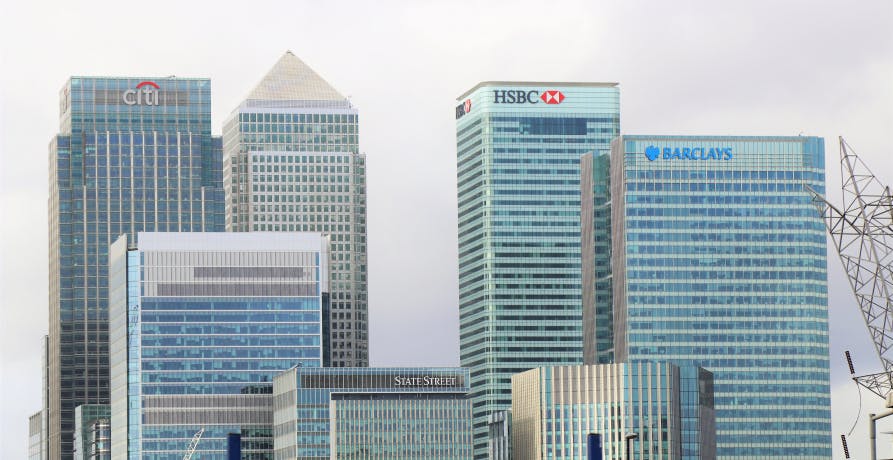ESG / CSR
Industries
The UK’s Green Finance Strategy: principles, objectives and steps



The UK published its Green Finance Strategy in 2019, setting out a plan to help facilitate its transition to a green financial system. The UK Government recognised that fundamental changes were necessary to the way that decisions are made with regards to the UK economy, and that if the UK is to meet its net-zero emissions targets then the financial sector would need to incorporate the risks and opportunities brought about by climate change and other environmental challenges.
👉 So what exactly is the UK’s Green Finance Strategy? How does it aim to integrate environmental considerations into mainstream financial-decision making? And how far has the UK come since its publication?
What is the UK’s Green Finance Strategy?
Prior to the publication of the Green Finance Strategy in 2019, the UK Government had already produced a number of initiatives relating to climate change and environmental issues, for example, the Climate Change Act 2008, the National Adaptation Programme, its Clean Growth Strategy, and its 25 Year Environmental Plan.
However, the UK Government acknowledged that if it was to meet its net-zero commitments by 2050 that it needed to go further than this, and that it would need to focus its attention on the UK financial sector to facilitate investment into cleaner, more environmentally conscious economic growth.
The Green Finance Strategy is the UK Government’s response to this. It built on the already published Green Finance Report, and details the measures needed to facilitate and mobilise investment in green projects.
The Green Finance Strategy’s objectives
The Green Finance Strategy is integral to the UK Government’s plans to encourage green investment and it adopts two objectives to this end. These objectives are:
- The UK Government will endeavour to align private sector financial flows with clean, environmentally sustainable and resilient growth, supported by Government action.
- The UK Government also recognises that green investment is crucial when it comes to bolstering the UK financial sector, and that the transition to net zero represents significant commercial opportunities. The UK Government aims to strengthen the UK financial sector’s competitiveness in this regard.

How will the UK achieve its objectives?
The aim of the UK’s Green Finance Strategy is to stimulate investment into the types of projects and developments that will protect the UK economy from climate-related risks. It aims to do so by focusing on three pillars. These are:
Green finance
The UK recognised that it must ensure that current and future financial risks and opportunities from climate and environmental factors form a part of financial decision making, and that markets for green financial products are sufficiently robust. So how does this pillar support the UK’s financial sector as it adapts to climate change, and how does it align with the UK’s net zero commitments?
The Green Finance Strategy stipulates that this will be achieved by supporting knowledge sharing, clarifying roles and responsibilities, encouraging transparency, and by building robust financial frameworks. Specific policies that the UK adopted to achieve this include:
- Ensuring that all London Stock Exchange listed companies and large asset owners disclose environmental and climate change information as per the Taskforce on Climate-Related Financial Disclosure (TCFD) recommendations
- Creating a disclosure task force to support on appropriate disclosures and to work with the British Standards Institution to develop Sustainable Finance Standards
- Clarifying responsibilities of the different finance sector regulatory bodies, such as the Prudential Regulation Authority, the Financial Conduct Authority, the Financial Policy Committee and the Pensions Regulator
- Longer-term initiatives include developing sustainable supply chains and investigating further policies to accelerate the UK’s alignment with the Paris Agreement objectives
Financing green
The UK Government is working to accelerate the financing of private investment which supports the delivery of the UK’s carbon targets and facilitates clean and resilient growth. The UK Government details that it plans to achieve this through the establishment of resilient, long-term policy frameworks, improving the access to green investment, addressing market barriers, and by developing innovative approaches and ways of working.
Capturing opportunity
The UK Government recognises that the transition to net zero represents an opportunity and it aims to ensure that the UK financial services sector captures the domestic and international commercial opportunities arising from this. It wants to cement the UK’s position as a global leader in green finance, to lead in terms of green financial innovation, and to build skills and capabilities in this area. Specific measures that were adopted to help achieve this include:
- The establishment of the Green Finance Institute to strengthen the collaboration between the public and private sector
- The enhancement of climate-related data and analytics
- Promotion of mainstream green finance products and services
- The launch of a Green Home Finance Fund which provides funding for private sector green pilot projects
By integrating both the risks and opportunities from climate and environmental factors into financial decision making, these three objectives work to strengthen the UK economy’s resilience, to reduce the risks presented by climate change and to protect the future of the UK economy.

What steps has the UK Government taken since the publication of its Green Finance Strategy?
Since the UK’s Green Finance Strategy was first published in 2019, the UK has taken significant steps to deliver these objectives. Let’s take a look at how the UK Government has worked to achieve these goals in a bit more detail below:
COP26
The UK Government placed green finance front and centre at COP26 in Glasgow in October 2021. The then UK Chancellor (Rishi Sunak, now the UK’s Prime Minister) hosted ‘Finance Day’ with the aim of ‘promoting finance at scale for net zero and climate resilient development’. Significant progress was made on a number of issues, the most notable being that financial organisations with over 130 trillion USD at their disposal (around 40% of the world's capital) are now committed to putting climate change at the centre of their work.
Net-zero alignment
The UK Government has set out plans to become the first net-zero aligned financial centre in the world and is currently working on plans to mandate that UK companies publish climate transition plans.
Additionally, the UK Government launched the Transition Plan Taskforce (TPT) in April 2022 to ‘develop the gold standard for private sector climate transition plans.’ The TPT published their Disclosure Framework and Implementation Guidance in November 2022, this is currently under review and is expected to be finalised later in 2023.
UK Infrastructure Bank
The UK Infrastructure Bank was launched in June 2021. It is a British state-owned investment bank, intended to help the UK Government reach net-zero carbon by 2050. It provides £22 billion of infrastructure finance, and partners with both the private sector and local government to help finance green development across the UK.

Taskforce on Climate-Related Financial Disclosures (TCFD)
The UK is the first country in the G20 to adopt into law the climate disclosure recommendations laid out by the TCFD. Large companies in the UK are required to disclose climate-related financial information and to consider the climate-change risks and opportunities.
👉 The Taskforce on Climate-Related Financial Disclosures (TCFD) was created by the Financial Stability board (FSB), an international body, to develop consistent climate-related financial risk disclosures for use by companies, investors and banks when providing information to stakeholders.
Taskforce on Nature-Related Financial Disclosures (TNFD)
The Taskforce on Nature-Related Financial Disclosures recommendations are still under development, and the final framework is expected to be published later in 2023. However, in the meantime, the UK Government has supported the Taskforce in its design of a risk management and disclosure framework, requiring organisations to report on nature-related risks.
UK’s International Climate Finance (ICF)
“International Climate Finance is a UK Government commitment to support developing countries to respond to the challenges and opportunities of climate change.” In fact, the UK has committed to doubling its finance between 2021 and 2026.
Leader’s Pledge for Nature (LPN)
The UK was one of the negotiators of the LPM, which includes commitments to incentivise both national and international financial systems to align financial flows with environmental commitments.
👉The Leader’s Pledge for Nature was launched in support of the UN Summit on Biodiversity. It outlines ten actions that will help the world to achieve the vision of Living in Harmony with Nature by 2050.

Financing Programme
The UK kicked off its green financing programme by issuing two sovereign green gilts worth £16 billion.
❓A gilt is a UK Government liability issued by HM Treasury and listed on the London Stock Exchange.
The UK also launched the first sovereign retail Green Saving Bonds - this is a savings bond that uses your money to fund environmentally friendly projects selected by the UK Government.
Updates to the Green Finance Strategy
In May 2022, the UK Government issued a Call for Evidence (CfE) for an update to its Green Finance Strategy (first published in 2019). This call seeks evidence and input from stakeholders to support the UK Government as it looks to update the 2019 Green Finance Strategy. This revised edition will reflect the progress made since its initial publication, as well as the UK’s continued commitment to meeting its climate commitments which are already laid out in a number of publications, including:
- The 2021 Net Zero Strategy which lays out how the UK Government will decarbonise the UK economy by 2050
- The 2022 Energy Security Strategy which aims to increase the UK’s energy security and independence and includes commitments to remove any reliance on Russian energy
- The UK Environment Act 2021, which enacts environmental goals into UK law
- The National Adaptation Programme (NAP) which outlines what the UK Government, society at large, and companies are going to do to adapt to the challenges of climate change
The UK Government is committed to transitioning to a clean, low-carbon economy and the Green Finance Strategy is an important step towards achieving this. We’ve seen significant steps forward to this end, and the updated Green Finance Strategy is an opportunity for the UK to position itself as a world-leader in green finance.

What about Greenly?
At Greenly we can help you to assess your company’s carbon footprint, and then give you the tools you need to cut down on emissions. Why not request a free demo with one of our experts - no obligation or commitment required.
If you’d like to learn more about a specific industry, Greenly can help by providing an in-depth industry study, created by our climate scientists.


